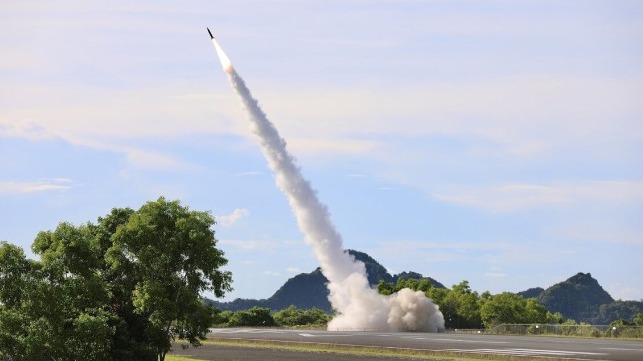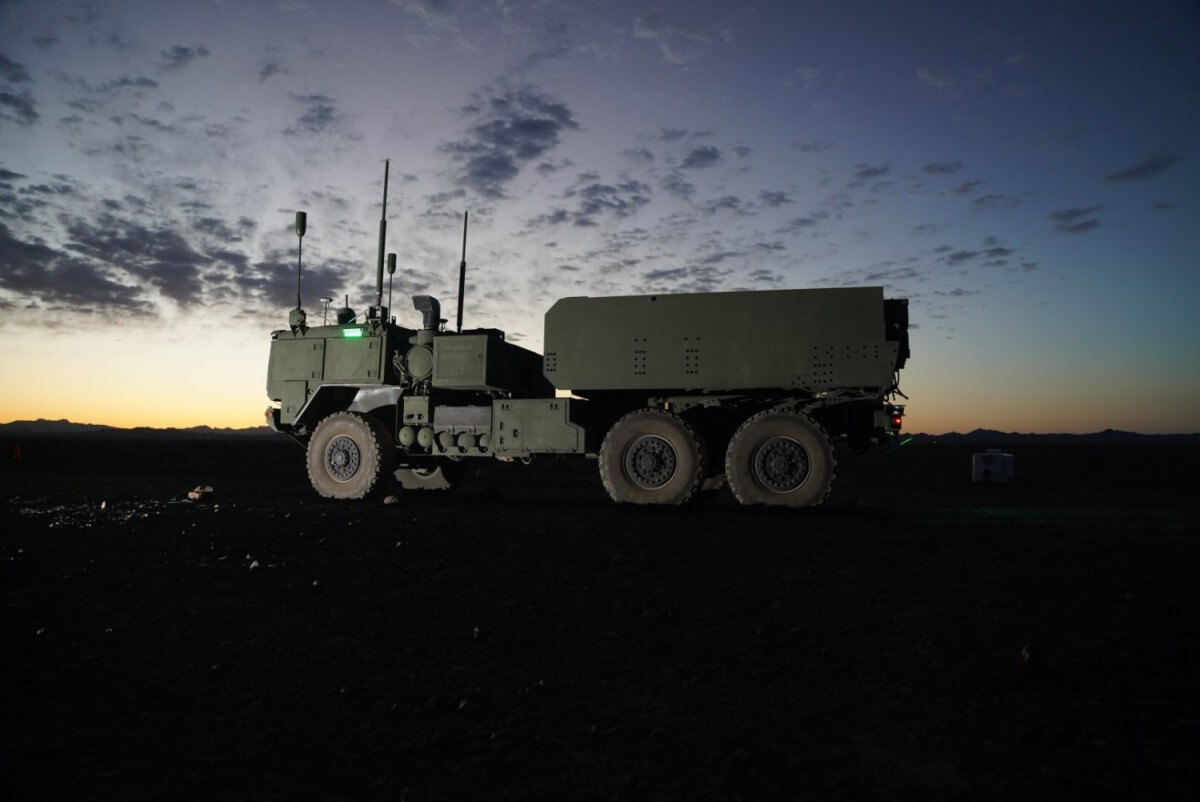U.S. Army Tests New Ballistic Missile on a Moving Maritime Target

The U.S. Army used a new long-range ballistic missile and an autonomous launcher truck against a moving target vessel during the Navy's last sinking exercise, according to the service's 3rd Multi-Domain Task Force. This previously unreported detail has substantial implications for America's Indo-Pacific defense strategy, which relies in part on a distributed, island-based network of mobile antiship systems.
Earlier this month, U.S. forces announced a recent sinking exercise targeting a decommissioned amphib, the Austin-class amphibious transport dock USS Cleveland. The operation occurred at an undisclosed position in the Philippine Sea, about 40 nautical miles offshore. The operation involved a squadron of U.S. Marine Corps strike fighters based out of an airfield on Guam, but few details or images were provided.
On Friday, the U.S. Army announced that one of its high-tech task forces participated in the sinking exercise, deploying an autonomous self-driving missile launcher and a new model of ballistic missile to engage a "moving maritime target," presumably USS Cleveland. The statement is unusual, as U.S. Navy sinking exercises use immobile hulks as targets.
The Army's 3rd Multi-Domain Task Force and an artillery unit from the Tennessee National Guard deployed to Palau for the sinking exercise, bringing the new Autonomous Multi-Domain Launcher (AML) and the new Precision Strike Missile (PrSM) systems with them. They launched two of the missiles at the vessel target; the Army did not detail the effects, and no imagery of USS Cleveland's final day has been released. It was the first time that AML and PrSM have ever been used outside of the United States.
The AML is a self-driving, autonomous, cabless version of the Army's HIMARS missile launch truck. The original manned version is well-known for its role with the Ukrainian armed forces. The development of the AML is intended to give U.S. Army units a way to deploy and move the missile launcher remotely, without putting drivers and ground crews at risk from a potential counterstrike.
 AML's windowless cab (U.S. Army)
AML's windowless cab (U.S. Army)
AML can carry the full range of HIMARS weapons payloads, including the ATACMS ballistic missile - which has likely been used by Ukraine against vessel targets in the Black Sea - and the newly-developed PrSM, the replacement for ATACMS. The launcher can be loaded and carried in a C-130 cargo plane for deployment anywhere with an airstrip.
During the exercise, 3MDTF also tested out two high-tech airborne platforms that could help make comms and ISR tasks possible across the vast reaches of the Indo-Pacific - even if military satellite systems are degraded. The task force launched a high-altitude balloon (HAB) from Guam, sending a payload of "electromagnetic sensing and mesh communications equipment" aloft to an altitude of more than 50,000 feet.
They also launched an ultra-long endurance unmanned aircraft drone, dubbed "Vanilla," which can stay aloft at high altitudes for up to eight days at a time. Like the HAB, Vanilla can perform many of the same functions as a satellite, like persistent comms and ISR - but can be tasked and retasked with different payloads and different areas of coverage. The exercise was Vanilla’s "graduation event" and its formal readiness assessment, 3MDTF said.
